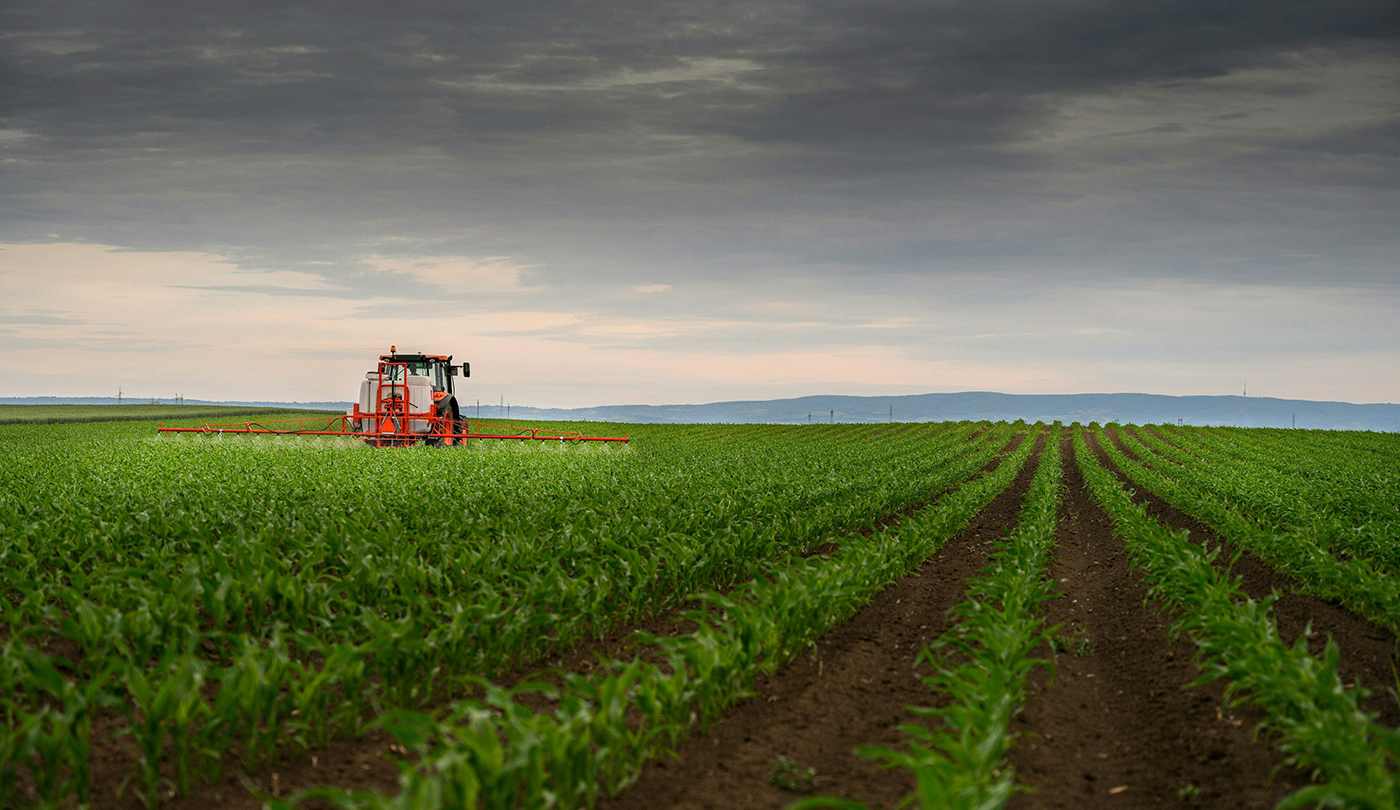Europe’s Blueprint for Affordable Clean Energy: Lessons from the 2025 Price Plan
- Topics :
- Agriculture Energy
The Power of Biofuels on the Path to Decarbonization
Published February 9, 2024

If you’ve put gas in a car in the past decade, chances are you’ve used a biofuel. Flex-fuels like E85 are a mix of ethanol and gasoline—and ethanol is often produced from corn.
Biofuels are being used across industries like transportation, shipping, and even aviation. Virgin Atlantic completed the first long-haul commercial flight with sustainable aviation fuel. Cities all over—New Orleans, Stockholm, Shanghai—are using biofuels to run public buses. One of the largest maritime shippers, Maersk, is using alternative fuels to reduce its carbon footprint.
In the U.S., energy consumption is expected to grow by 50% by 2030, according to the Department of Energy (DOE). So, the development and diversification of energy sources is critical in order to reach net zero emissions. Battery technology and clean hydrogen will play a significant role—but those technologies require significant infrastructure and have yet to scale.
Biofuels are already playing a significant role in decarbonization right now. In the early 2000s, U.S. energy policy helped drive a significant increase in domestic ethanol production. More recently, the DOE has announced over $1 billion in multi-year biofuels research and development projects within the last year.
Biofuels can come from many sources, such as soybeans, algae, landfill waste, and animal fat, although corn-based ethanol is one of the most prevalent. Ethanol manufacturers, such as row crop farmers and agricultural processors, use about 40% of the U.S. corn crop for ethanol, according to the USDA. It’s a key part of the economy in Iowa, Nebraska and other Midwest states. Plus, nearly all gas sold in the U.S. contains 10% ethanol.
There is an opportunity to use biofuels on the path to net zero and for many hard-to-abate industries. Processors will require a precise level of data collection and analysis in order to cut emissions throughout the life cycle.
How Biofuels Reduce Carbon Emissions
What’s exciting about biofuels is its potential to actively decrease carbon intensity—a measurement used to calculate carbon emissions. For example, under climate regulation, like the EU’s Emission Trading System, biofuels would be counted as having zero carbon emissions.
Transportation accounts for about 27% of greenhouse gas emissions, with over half of those emissions coming from light-duty vehicles, according to the EPA. In the past 30 years, emissions in transportation increased more than any other sector. It’s important to address these emissions with a sense of urgency. Many experts are looking to biofuels which have a good chance of reducing emissions in industries like transportation.
Biofuel like corn-based ethanol is grown from renewable resources, it’s cleaner burning than standard gasoline, and its production infrastructure is established. All these factors make it a better option than regular gasoline. Scientists at Argonne National Laboratory found that corn ethanol produced in the U.S. had a 24% reduction in carbon intensity.
Decarbonization Challenges for Ethanol Processors
Let’s examine the supply chain for ethanol-based corn. It starts with corn production, then the crop is harvested and transported to a biorefining plant. After it’s processed into fuel, it’s sold.

One of the most compelling aspects of biofuels is its unique opportunity for decarbonization across the life cycle. In order to evaluate the benefits of a particular biofuel, scientists will analyze the life cycle to compare the impacts of different fuel production pathways. All biofuels and production processes are not the same. Figuring out the true decarbonization benefits requires a high level of data precision.
The supply chain is relatively straightforward, but measuring carbon emissions and analyzing each part of the process is more complex. From well-to-wheels, there is a lot that can impact the carbon intensity.
For example, growing the corn needed for ethanol production contributes more than 40% of the total carbon intensity for a gallon of ethanol. One way carbon is emitted is when the land is tilled, after the corn is harvested, carbon is released from the soil.

At other stages of the supply chain, carbon emissions are counted from the energy that biorefineries use to operate. Transporting the corn to the refiner and then distributing the product also releases a certain amount of carbon into the atmosphere.
Then you also have to consider other components of the life cycle. When corn is growing, it absorbs carbon from the atmosphere. Sometimes farm machinery will operate with biofuel and there are credits farmers can receive for producing an animal feed co-product.
It is a complicated equation. How do you measure how much carbon is sequestered in the soil? What amount of carbon is emitted from the energy used by trucks to transport the product? Or what about the emissions from fuel blenders or retailers? What interventions can be taken to reduce overall carbon intensity?
Increasing Accuracy and Lowering Carbon Intensity
It is essential to understand the emissions data at each part of the process with the highest degree of accuracy. Through NZero’s platform, processors have the ability not only capture the cleanest data but get recommendations on low-carbon interventions and easily report emissions to stakeholders.
The supply chain is relatively simple which means processors are able to isolate emission points within the life cycle. A single management change, capital investment, or operational adjustment can see the total carbon intensity dramatically drop.
For example, a farmer’s decision to introduce a no-till technique can increase carbon sequestration in the soil and see a 15% reduction in emissions at this stage. Farmers who introduce smart agricultural management practices can decrease the carbon intensity attributed to corn production down to a single digit. Potentially, even zero depending on land use practices.
Introducing solutions like carbon capture and storage (CSS) along with other practices can reduce carbon emissions, too. Ethanol industry trade groups, like the Renewable Fuels Association, emphasize that CSS is one of the most effective actions that processors can take to decarbonize. The group recommends that 90% of ethanol plants implement the technology by 2050. Dozens of Midwest ethanol plants support pipelines that would transport captured carbon from their facilities to underground storage, according to Reuters. Given the investment in this technology already, it becomes imperative to communicate the data tied to those reductions.
Interventions like CSS and other management practices could nearly cut the life cycle emissions of a biofuel in half. So it’s essential for a biofuel processor to be able to trace how those emissions reductions impact a gallon of their fuel.
NZero: A Partner in Sustainability Success
NZero can capture all of the necessary data and turn it into an actionable roadmap. The platform automates carbon emissions data by the hour and can bring an entire supply chain seamlessly into view. This means processors can calculate carbon intensity at every point of production and translate that data into decisions about carbon reduction strategies.
In our work we’ve seen how a reliable baseline measurement of carbon emissions provides processors with a strong foundation for any decision moving forward. NZero easily analyzes historical trends and offers insights into future scenarios to help processors reduce emissions. The platform has shown how to increase in production while also decreasing carbon intensity.
NZero can get to a level of granularity that is 35% more accurate than competitors. Processors can visualize the carbon intensity of feed stocks they are sourcing from individual farming operations and differentiate how climate-smart management practices can cut Scope 3 emissions.
All of this data ultimately leads to streamlined decision-making where processors can drastically reduce the carbon footprint of their final products. For those looking to maximize the benefits of better agricultural management practices, automate processes like CI scoring, and implement the right low-carbon infrastructure investments—NZero is your partner to unlock these sustainable solutions.









